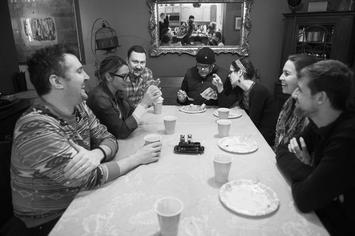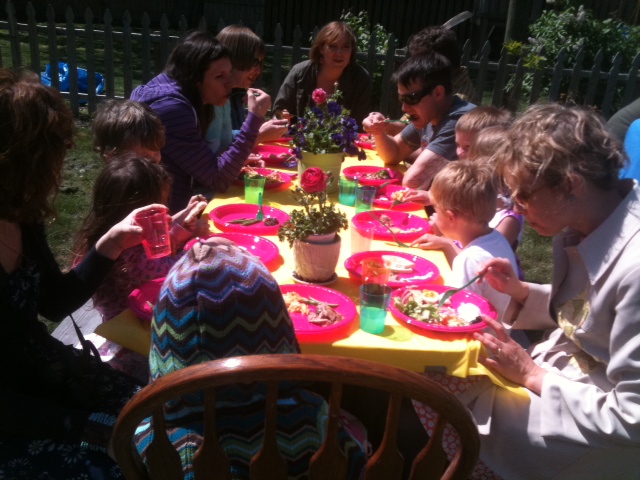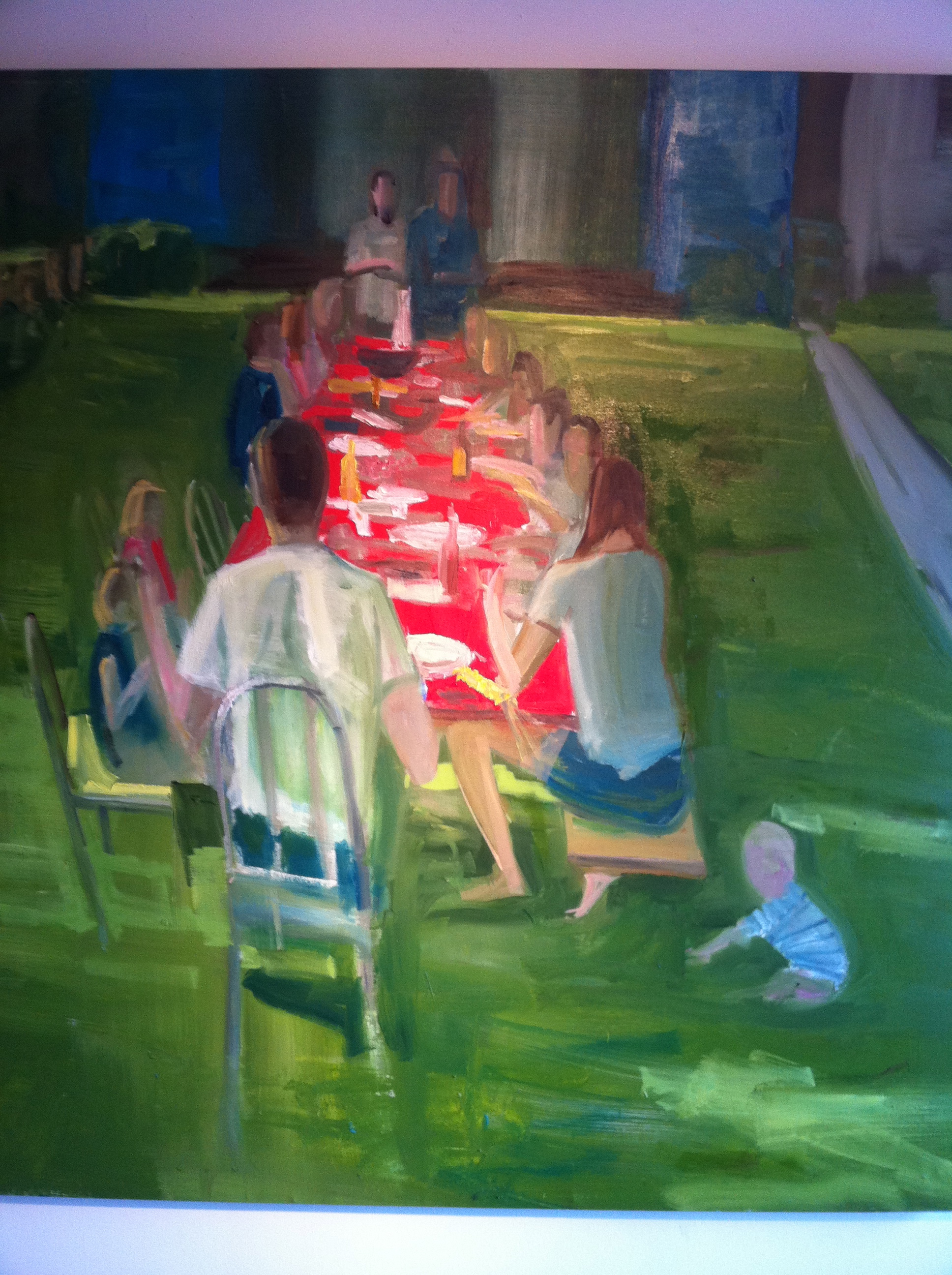
Urban culture varies radically from city to city. Yet to a great extent the culture of the usual suspects type of places tends to get portrayed as normative. In New York, for example, with its tiny apartments, the social life is often in public, in many cases literally on the streets of the city, which pulse with energy. As the ne plus ultra of cities, the street life of New York is often seen as what every place should aspire to. There’s a body of literature which attributes all sorts of positive effects to this New York style urbanism, such as the notion of “collisions” and “serendipitous encounters”. But while New York’s street life and social scene may indeed be engaging, how often does one actually strike up a conversation with someone random on the street or in a coffee shop there that turns into something meaningful? The only collisions I’ve ever had there were literal.
New York is the most well known and championed style of interaction, though hardly the only one. Think of San Francisco and something clearly distinct will come to mind, albeit with some similarities. LA has its own mythos. The TV show Portlandia does a great job of capturing our idea of the quirky urban life of that city.
Cities that lack the cachet of an NYC, SF, or Portland can often find their own urban culture lacking in comparison. To be taken seriously, the logic goes, they must measure up to the yardstick defined by others. But while I do not subscribe to the idea of value free cultural comparisons, I do believe cities need not judge themselves as wanting just because they don’t function like New York City. Rather, they should seek to be the best they can be on their own terms. Since few cities are anything like New York, aspiring to that kind of urbanism would only be a case study in frustration anyway.
Indianapolis cultural commentator David Hoppe once said something to the effect that “the social life of Indianapolis happens in back yards.” And this is true. Unlike a New York City, Indianapolis does not wow you just by walking down the street. While I believe in trying to contextualize the facts on the ground in the most positive way possible for moving forward, that doesn’t mean reclassifying genuine defects as virtues. In the case of Indianapolis, the generally poor impression left by its built environment and lack of street life can’t be denied. There are plenty of great places to go, but you generally need someone to point you in the right direction.
But there are countervailing virtues as well, ones generally under appreciated. Unlike New York, Indy has a far more robust social life in private spaces like houses and back yards. This produces a qualitatively different type of social capital, one with its own unique set of strengths.
One example of this is the emergence of community based Sunday dinners. This was an organic movement and as a result lacks a fancy name, but in keeping with the generally low key and unpretentious character of the city, let’s just call it Sunday Night Dinner.
Sunday night dinners are a type of intentional community in which 6-8 families in a neighborhood decide to get together for dinner every Sunday night on a rotating basis. This originated in 2006 on Pleasant St. in the Fountain Square neighborhood when a group of neighbors decided to start getting together regularly for dinner. Here’s how Tonya Beeler, one of the founding members, describes it:
When most of us talk about it, we just call it Sunday Night Dinner. It’s unassuming, I know – but that’s what Sunday Dinner is to us. We’ve had it consistently for almost 8 years – having only cancelled dinner a handful of times. The majority of the families on the original list are still regular participants and we’ve added and lost a few through the years.
What is Sunday Night Dinner to us? In this stage in our lives, its sometimes difficult to physically connect to your neighbors, but we know that each Sunday we’re going to see our friends. It’s also a good time to have newcomers to the neighborhood connect with some of us old timers. We’ve also had visits from Mayor Ballard (before he was elected) and Melina Kennedy (when she was running) and I still have a fond memory of John Day sitting down to sup with us. But what is it mostly? Just a day in the week where we meet to take a breath, sit down, and eat together. It’s my favorite day of the week.
I used to be part of a quarterly dinner club in Chicago. Given the frequency, our idea was to make each dinner “special” in the sense that we went all out with super high-quality food, etc. In Indy, while good food is certainly part of the equation, the regular weekly cadence means it’s as much about friends and neighbors as it is special ambiance. It’s about regular life lived in the city. In the picture at the top it’s paper plates and plastic cups all the way – and that’s just fine. Can’t stay for some reason? No worries, bring some tupperware, grab some food, and run. In a sense, it’s the Kinfolk Magazine ethic (motto: doing things simple sure is complicated – and expensive) in genuine form, shorn of Portland pretense.

Sunday night dinner in the Beeler’s backyard in Fountain Square, Indianapolis, Easter 2012. Photo: Cindy Ragsdale
Oh, and typically with children, which actually exist in abundance in Indianapolis.
The idea spread and now there are Sunday night dinner groups all over the city. I’m told there are three in Herron-Morton Place alone, which I can’t quite wrap my head around given how small the area is.
I can’t help but notice the similarity of these dinner groups to religious small group gathering. In the last couple decades, Evangelical churches have moved away from mid-week services in favor of small group gathering during the week (sometimes called home groups or other names). The idea is to promote more actual community than is possible in a larger assembly format. These dinner groups are in effect secular small groups, ones that help provide the sense of connectedness, regularity, and rootedness that’s so often missing from our contemporary world.

Outdoor fun on Sunday night isn’t just for summer in Herron-Morton Place, Indianapolis. Photo by Amanda Reynolds.
These groups aren’t just walled garden cliques, however. The host generally invites guests to attend. So there’s a type of brokered introduction which in my experience is the real source of “serendipitous” encounters of genuine value. An arranged guest invite is one way to get people connected in their neighborhood, or even to help people who are deciding whether or not to take the plunge into city living to get a feel for what life lived in a particular neighborhood is actually like.
In fact, if you are visiting Indianapolis on a Sunday night, or live there and want to check it out, email the City Gallery at the Harrison Center For the Arts and they will set you up. The email address is citygallery@harrisoncenter.org
I don’t want to suggest that Indianapolis invented the concept of the dinner club or is the only place such events occur. For all I know, lots of places do this. (Heck, as big as it is, odds are that includes New York City). And as with all traditions, this particular instantiation will likely die off at some point (though it’s still growing eight years after starting on Pleasant St). Yet the prevalence of this type of cultural phenomenon is part of the explanation for why Indianapolis has consistently managed to punch above its weight class in so many areas. Although the type of obvious assets and strength evidenced by super-cool buildings or crowds on the street may be lacking in Indianapolis vis-a-vis some other places, the city contains deep reservoirs of cultural capital that aren’t as visible and may never be fully understood or mapped, but nevertheless are of profound importance. This is the real secret sauce of the city.
Copying this idea, locally or anywhere, is definitely welcomed. Should you be interested, here are the “Indianapolis Rules” for Sunday night dinners, courtesy of Tonya Beeler:
1. Dinner is every Sunday night, with six to eight families, each hosting on a rotating basis.
2. The host is responsible for preparing all of the food for everyone. (Work? Yes, but it also means seven weeks of not having to do anything but show up).
3. The host is responsible for inviting all guests. Do not invite guests without checking with the host first.
4. If you’re not coming, tell the host as far in advance as possible.
5. At the very beginning of the dinner, the host makes sure all the guests know of any rules for the house (no one allowed upstairs, kids can’t eat in the living room, toilet handle needs to be held down for 3 seconds, whatever).
6. If your family will not be coming for dinner, but you still want food, there’s no need to let the host know, just stop by early in the meal (so you don’t miss anything, food goes fast!!!) with some tupperware and fill it to go.

Sunday night dinner in Fountain Square, Indianapolis. Painting by Kyle Ragsdale.
Aaron M. Renn is an independent writer on urban affairs and the founder of Telestrian, a data analysis and mapping tool. He writes at The Urbanophile, where this piece originally appeared.
Lead photo: Sunday night dinner in Herron-Morton Place, Indianapolis. This is one of three dinner groups in that neighborhood. Photo by Amanda Reynolds (check out the mirror!)













The problem is
you are in Indianapolis.
Death by ennui is common.
Dave Barnes
+1.303.744.9024